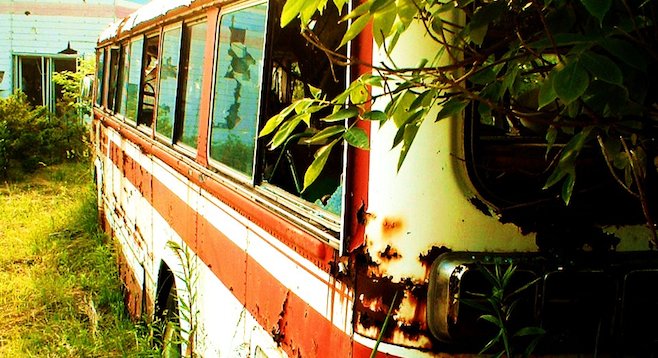 Facebook
Facebook
 X
X
 Instagram
Instagram
 TikTok
TikTok
 Youtube
Youtube

Lake Tōya in Hokkaidō, Japan, is a small tourist resort nestled among mountains and active volcanoes. Known for its serene landscape and relaxing onsen spas, it also has a darker side; in 2000, the majestic Mount Usu erupted and destroyed nearby roads and buildings. Today, hiking trails lead the curious visitor through the smoking fumaroles and abandoned remains.
On a sunny afternoon, the lake is a pleasant retreat. Cruise boats idle to and from Nakajima Island in the shadow of snowy mountains, while tourists flounder in row and pedal boats.
From April to October, evening firework displays draw families from the hotels in their yukata robes to watch the colors explode across the water. The people are friendly, and the restaurants are noted for their delicious "funka" ramen.
The town also has a sinister side. Fans of the Silent Hill computer game and movie franchise might notice similarities between Lake Tōya and the virtual “Toluca Lake.” A previous G8 summit site, the town lies in somewhat faded glory with shabby buildings and silent, empty streets.
The imposing Windsor Hotel bears more than a passing resemblance to Silent Hill’s Lakeview resort, especially when the morning mists roll in and obscure the point where water meets land. Swan-shaped pedal boats loom like monsters out of the mist and lap at the shore with eerie, disorientating noises. In the first few hours after arriving at Lake Toya, we didn’t see a single soul.
Away from the peaceful onsen hotels, the Konpira Crater Trail has been preserved as a memorial to the eruption and winds through the remains of a bridge washed away by lava, an abandoned bathhouse and apartment building. Plant life sprouts out of broken glass and forces its way through cracks in the concrete walls. Pipes and ceiling beams hang like creepers in vacant rooms. Windows are empty holes. Everything is silent and untouched.
Also a short walk from the lake is the Nishiyama Crater Trail. The destruction here is far more shocking; cars have been flattened under concrete blocks, power lines have been ripped out of the ground and hang over the humped remains of roads between crooked phone poles. The ground is unstable as we walk among the steaming craters, threatening echoes of the future devastation lying beneath our feet.
Saddest of all, the trail ends at a kindergarten. Faded murals of animals and children still adorn the walls, the images torn apart by cracks in the concrete. A rusting, derelict school bus hides in the bushes (pictured). The jungle gym is warped out of shape, unusable. The quiet absence of laughter and play is painfully obvious in the afternoon breeze.
Lake Tōya is a welcome break from the frenetic bustle of Japanese cities and a tranquil place to rest, but the little town is also a reminder that the mountains are only sleeping and it may be just a matter of time before they wake again.


Lake Tōya in Hokkaidō, Japan, is a small tourist resort nestled among mountains and active volcanoes. Known for its serene landscape and relaxing onsen spas, it also has a darker side; in 2000, the majestic Mount Usu erupted and destroyed nearby roads and buildings. Today, hiking trails lead the curious visitor through the smoking fumaroles and abandoned remains.
On a sunny afternoon, the lake is a pleasant retreat. Cruise boats idle to and from Nakajima Island in the shadow of snowy mountains, while tourists flounder in row and pedal boats.
From April to October, evening firework displays draw families from the hotels in their yukata robes to watch the colors explode across the water. The people are friendly, and the restaurants are noted for their delicious "funka" ramen.
The town also has a sinister side. Fans of the Silent Hill computer game and movie franchise might notice similarities between Lake Tōya and the virtual “Toluca Lake.” A previous G8 summit site, the town lies in somewhat faded glory with shabby buildings and silent, empty streets.
The imposing Windsor Hotel bears more than a passing resemblance to Silent Hill’s Lakeview resort, especially when the morning mists roll in and obscure the point where water meets land. Swan-shaped pedal boats loom like monsters out of the mist and lap at the shore with eerie, disorientating noises. In the first few hours after arriving at Lake Toya, we didn’t see a single soul.
Away from the peaceful onsen hotels, the Konpira Crater Trail has been preserved as a memorial to the eruption and winds through the remains of a bridge washed away by lava, an abandoned bathhouse and apartment building. Plant life sprouts out of broken glass and forces its way through cracks in the concrete walls. Pipes and ceiling beams hang like creepers in vacant rooms. Windows are empty holes. Everything is silent and untouched.
Also a short walk from the lake is the Nishiyama Crater Trail. The destruction here is far more shocking; cars have been flattened under concrete blocks, power lines have been ripped out of the ground and hang over the humped remains of roads between crooked phone poles. The ground is unstable as we walk among the steaming craters, threatening echoes of the future devastation lying beneath our feet.
Saddest of all, the trail ends at a kindergarten. Faded murals of animals and children still adorn the walls, the images torn apart by cracks in the concrete. A rusting, derelict school bus hides in the bushes (pictured). The jungle gym is warped out of shape, unusable. The quiet absence of laughter and play is painfully obvious in the afternoon breeze.
Lake Tōya is a welcome break from the frenetic bustle of Japanese cities and a tranquil place to rest, but the little town is also a reminder that the mountains are only sleeping and it may be just a matter of time before they wake again.
Comments